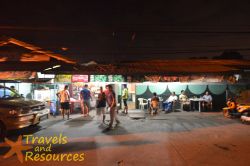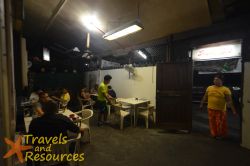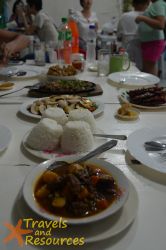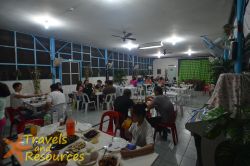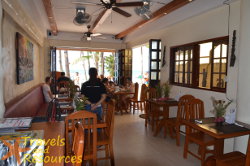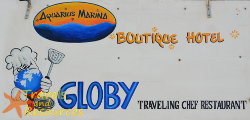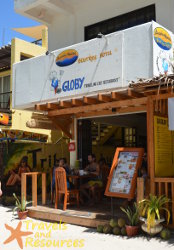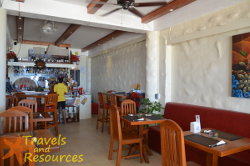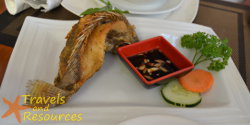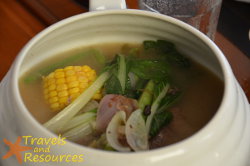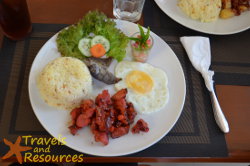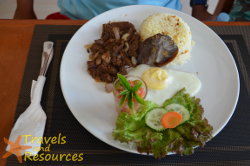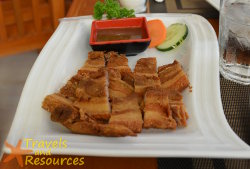Loboc River Cruise
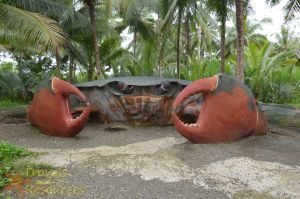
Visiting any country, especially like the Philippines, is never a complete experience without sampling the local dishes, even if it is just a little bit. What makes the Philippines very different is that there are so many provinces in its 7,107 islands. And that means that there is more than one way to cook a particular dish.
[Even within Metro Manila, the way dishes are cooked varies.]
Table of Contents
The Route
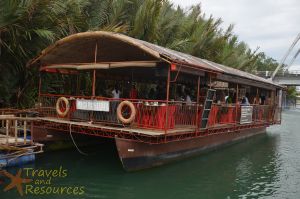
So when we visited Bohol, one of the things we had to do was take the Loboc River Cruise. The ride takes about an hour through the winding Loboc River. And since Bohol is very rich in natural resources, the banks of the river are filled with lush vegetation.
Before taking the cruise passengers need to decide whether they wish to view the small waterfalls way up river, or to visit the tribal village midway. In our case, we chose the latter because there are quite a lot of interesting things to take pictures of at the village.
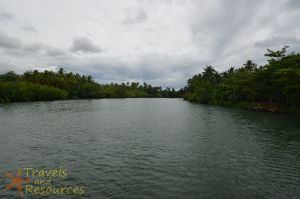
As the river boat cruises the river, everyone on board will be serenaded by a guitar-playing singer. In our case, our singer even included a harmonica in his repertoire.
It is no secret that Filipinos are one of the most gifted people when it comes to singing. Perhaps it is because the Philippines is the biggest Catholic country in Asia, thanks to the several centuries of Spanish occupation.
So while it comes as no shock to me to hear Filipino, Boholano, Cebuano, and English songs, I was pleasantly surprised to hear our singer belt out something in pure Japanese, to the delight of the Japanese in the next table.
The Village
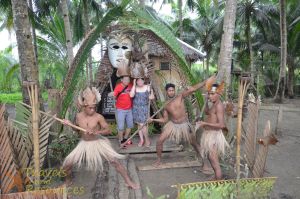
If you chose the village tour, the river boat will make a short stop at a Tribal Village halfway up the river. Some of the entertainment includes fire breathers and a few exotic animals.
And while they are interesting to see, my favorite sight has to be the statue of the giant Crab God located at the leftmost side of the village. The size and color just make it fun to take pictures of; and I highly suggest that you do not leave the village without getting a photograph of your being eaten or crushed by its giant claws.
[The thought of sacrificing a few people is nice too…]
The Food
When it comes to food, there are not-so-good news and good news, depending on how you look at things.
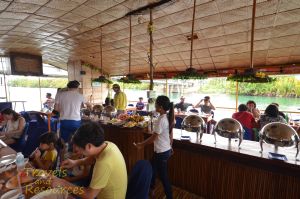
For people looking for a ton of exotic-tasting dishes, the news may be not-so-good as only one or two dishes may be authentic Bohol. If you fall in this category, you may want to try other restaurants frequented by the locals.
For people who are looking for safe or comfort food with a little bit of the local style, then the Loboc River Cruise will have good news for them. Majority of the food will be composed of something that most foreign and local tourists can dine on. There is Pork Barbeque on-a-stick, soup, pancit, vegetables, and other meat dishes. Then of course, there will be rice.
[Yes, lots and lots of rice.]
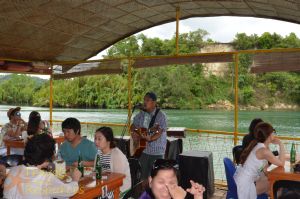
At PhP 450 per passenger, it may be good to know that the meal is a buffet so people can go back for seconds, thirds, and fourths. The price only covers one soft drink or bottle of water, though. Fortunately, additional bottles don’t cost an arm and a leg, so you won’t be broke if you want an entire case to satisfy your thirst.
[You might want to tell them in advance if you’ll have an entire case all to yourself, though.]
Some of you may be wondering why there aren’t enough exotic dishes for the cruise. Well, the answer is simple really: The captain and staff do not want to deal with a mutiny brought about by rabidly hungry people who cannot eat exotic dishes.
[So it’s for everyone’s safety to have food anyone can enjoy.]
Camera Tips
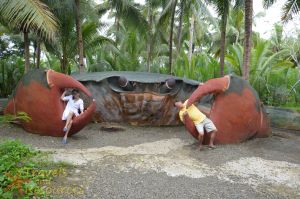
You’re going to need a wide lens if you want to put the whole crab in your picture. It is rather huge and there isn’t enough space for you to walk back and take it all in.
This is the problem I had when I used an 18-200mm lens on my dSLR, so I suggest taking something wider if you can. Also, using a flash may be helpful to prevent losing the details of the Crab God when you have your camera on Auto Mode.
Final Thoughts
There’s something soothing about a boat ride on a calm river that gets people relaxed. I’m not much a man of the ocean, preferring mountains and caves myself, but having a full meal composed of Pork Barbeque on a boat is something I can get used to.
Must Do’s
- Bring your appetite.
- Bring a wide lens for the Crab God.
Must Don’ts
- Do not lean out of the river boat because the water is deep.

